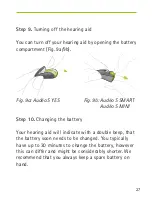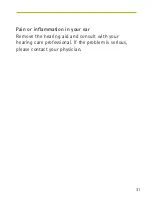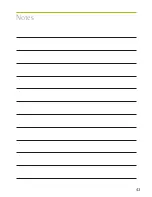
40
With the CE symbol, Phonak AG
confirms that this Phonak product –
including accessories – meets
the requirements of the Medical
Devices Directive 93/42/EEC as well
as the R&TTE Directive 1999/5/EC
on radio and telecommunications
equipment. The numbers after the
CE symbol correspond to the code
of certified institutions that were
consulted under the above-mentioned
directives.
This symbol indicates that the products
described in these user instructions
adhere to the requirements
for an applied part of Type B of
EN 60601-1. The surface of the
hearing aid is specified as an applied
part of Type B.
XXXX
10. Information and description
of symbols






























